There is more to tank care than just clean water and feeding your fish well: you must know about biofilm fish tanks. Sometimes, biofilm is a blessing, sometimes a curse – a slimy rainbow of various microbes often seen on surfaces such as driftwood and tank walls, and sometimes considered advantageous, other times viewed with good reason as a nuisance. However, biofilm is essential for the tank’s biological system, but at the same time, it may interfere with your tank’s aesthetics and cause problems with your fish’s health.
Content Table
This article will walk you through everything you need to know about what is biofilm, what its benefits and disadvantages are, how to distinguish them, and how to handle it or eliminate it safely to maintain the balance of an aquascape.
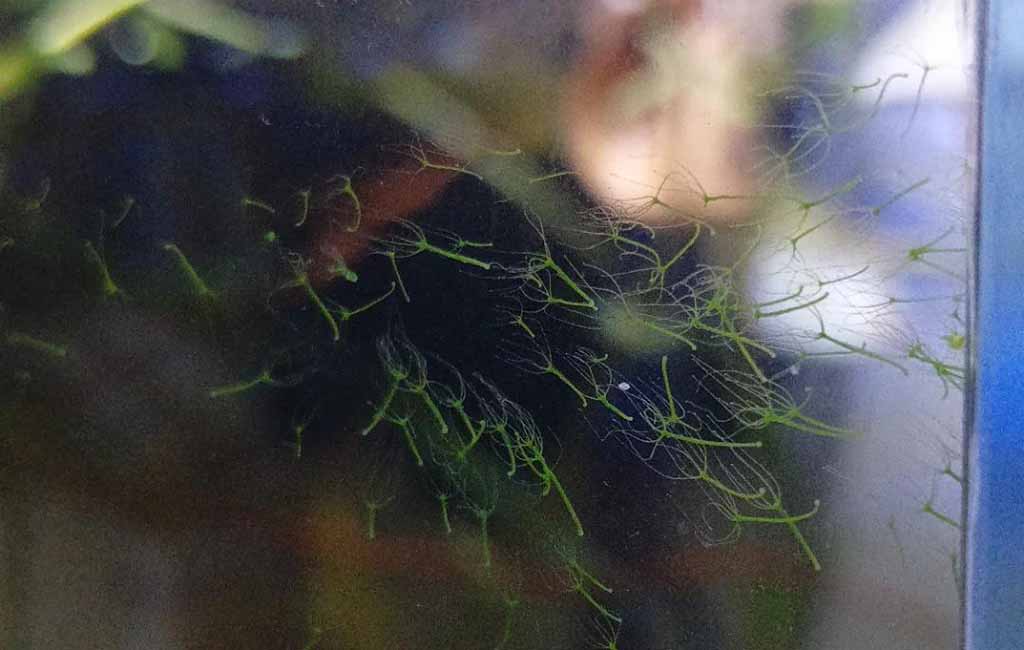
biofilm fish tank
What Is Biofilm
A slimy layer of microorganisms like bacteria, algae, and fungi that occurs on surfaces in the fish tank, such as glass, decorations, and plants is known as a biofilm. It lives in moist areas and is a component of the aquarium ecosystem. As was mentioned, biofilm can break down waste, however, too much can be ugly and harmful to fish tank inhabitants. Regular maintenance and monitoring help prevent and minimize biofilm growth and keep your tank free of problems.
Biofilm on Driftwood in Fish Tank
Slime film is a naturally occurring layer of microorganisms, like bacteria and fungus, that often grow on driftwood, such as spider wood, in fish tanks. It may not look pretty, but biofilm is a common phenomenon found in aquariums – particularly in newly established tanks.
Why Does Biofilm Form on Driftwood?
Nutrient Release: Untreated or new driftwood can release organic compounds into the water on which microorganisms feed.
Moisture and Light: Biofilm growth is ideal in the aquatic environment.
Natural Breakdown: Floating debris provides a surface for microbial activity as it decays.
Biofilm Bacteria for Fish Tanks
Biofilm bacteria are tiny organisms that live as a part of a slimy layer on surfaces such as driftwood, rocks, and walls in the aquarium. These are critical bacteria that are necessary to establish and maintain a balanced biological system in fish tanks.
Biofilm bacteria is a collective of microorganisms encapsulated in a slimy protecting matrix. Due to their matrix nature, these bands allow them to stick to surfaces and work together in the aquarium environment. Other microbes, fungi, and even algae can be in the biofilm.
Role of Biofilm Bacteria in Fish Tanks
- Supporting the Nitrogen Cycle
- Biofilm bacteria include nitrifying bacteria that convert harmful ammonia(from fish waste and decaying matter) into nitrites and then into less harmful
- This process is critical for maintaining water quality and ensuring the survival of aquatic life.
- Breaking Down Organic Matter
- Biofilm bacteria help decompose uneaten food, fish waste, and plant debris, preventing harmful buildup in the tank.
- Providing a Food Source
- Many species of fish, shrimp, and snails naturally graze on biofilm as part of their diet. This makes biofilm an integral part of the tank’s food web.
- Stabilizing the Ecosystem
- By colonizing surfaces, biofilm bacteria create a stable environment where beneficial microbes can thrive, contributing to overall tank health.
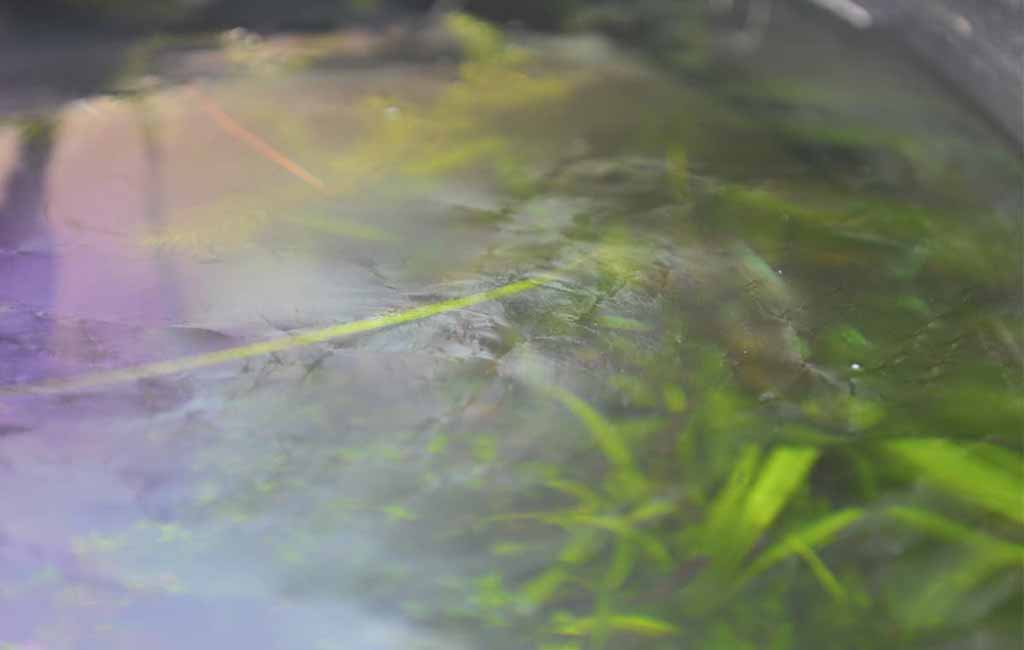
fish tank water biofilm
How to Encourage Healthy Biofilm Growth
- Add Surfaces: Introduce driftwood, rocks, and decorations for biofilm to colonize.
- Avoid Over-Cleaning: Excessive scrubbing can remove beneficial biofilm, disrupting the biological balance.
- Maintain Stable Water Conditions: Consistent pH, temperature, and oxygen levels support bacterial growth.
- Cycle Your Tank Properly: Allow biofilm bacteria to establish before adding fish.
Are All Biofilm Bacteria Beneficial?
Many biofilm bacteria are beneficial, but the problem areas come when unchecked biofilm can sometimes build up excess nutrients or unwanted algae growth. The result is that biofilm exists as a normal part of the ecosystem and becomes problematic only if it is neglected through regular maintenance.
How to Know There Is Biofilm in Your Fish Tank
Biofilm is a natural part of an aquarium’s ecosystem, and knowing your tank’s biofilm is the key to determining its ecology. Below, we will give you an idea of how to spot biofilm, how it forms, and, most importantly, how it can show up in your fish tank.
What Does Biofilm Look Like in a Fish Tank?
- Texture: Biofilm is slimy and gelatinous, often forming a thin layer.
- Color:
| Usually clear, white, or pale gray | It may also appear greenish, brownish, or cloudy if combined with algae or dirt. |
- Location: Commonly seen on surfaces such as:
| Driftwood (e.g., spider wood) | Rocks, aquarium decorations, and substrate | Tank walls, filters, and even plant leaves |
- Behavior in Water: Biofilm can sometimes detach and float in the water as a translucent film.
How Does Biofilm Form?
Biofilm forms when
- Organic Material Accumulates: Nutrients from fish waste, uneaten food, and plant debris feed microorganisms.
- Microorganisms multiply: Bacteria, fungi, and other microbes grow and secrete a protective matrix, creating the slimy biofilm layer.
- Surfaces Are Available: Biofilm adheres to solid surfaces like driftwood, rocks, and tank decorations.
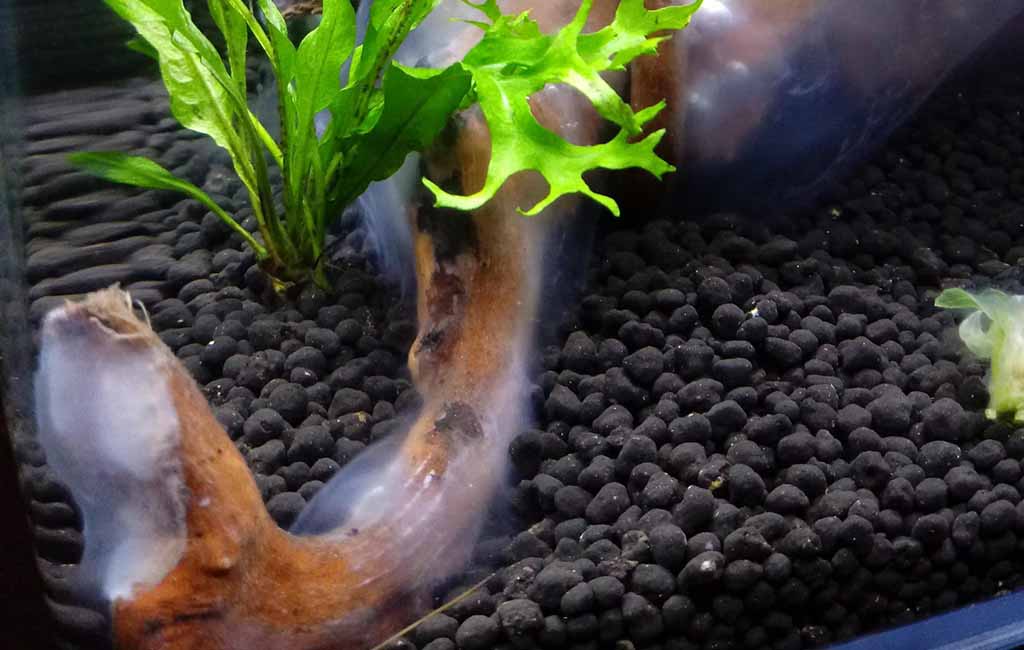
what is biofilm
How to Know If There’s Biofilm in Your Tank?
- Visual Inspection:
- Look for a thin, slimy layer on surfaces like driftwood or decorations.
- Observe if there’s a cloudy film floating on the water’s surface.
- Texture Test:
- Gently rub a surface (e.g., driftwood or rock) with your finger or a tool; biofilm feels slippery or slimy.
- Fish Behavior:
- Some fish, shrimp, and snails actively graze on biofilm, which can indicate its presence.
- Water Clarity Changes:
- Biofilm may cause a slight haze in the tank, especially if disturbed.
Get Rid of Biofilm in Fish Tank
Biofilm in a fish tank can be an unsightly and potentially harmful issue, especially if it covers surfaces like decorations, plants, or the water’s surface. Here’s a guide to effectively eliminate biofilm and maintain a healthy aquatic environment.
Identify the Cause of Biofilm
Understanding why biofilm is forming in your tank is key to preventing its recurrence:
- Excess Organic Waste: Biofilm growth requires this nutrient-rich environment from uneaten food, fish waste, and decaying plant matter.
- Poor Water Circulation: Because little water flows over certain surfaces, stagnant areas are able to build up biofilm.
- Overstocking or Overfeeding: If there’s too much food or more fish, it produces more waste, causing nutrient overload, which encourages biofilm.
Manual Removal
- Use a Paper Towel or Sponge: Remove the slimy layer by simply gently wiping the water surface with a paper towel. This is an especially good removal method for removing biofilm from the water’s surface or tank walls.
- Scrub Decorations and Equipment: Pull out damaged decorations, rocks, or plants and scrub away biofilm with a soft brush. Don’t use rough cleaning products, they could hurt your fish or plants.
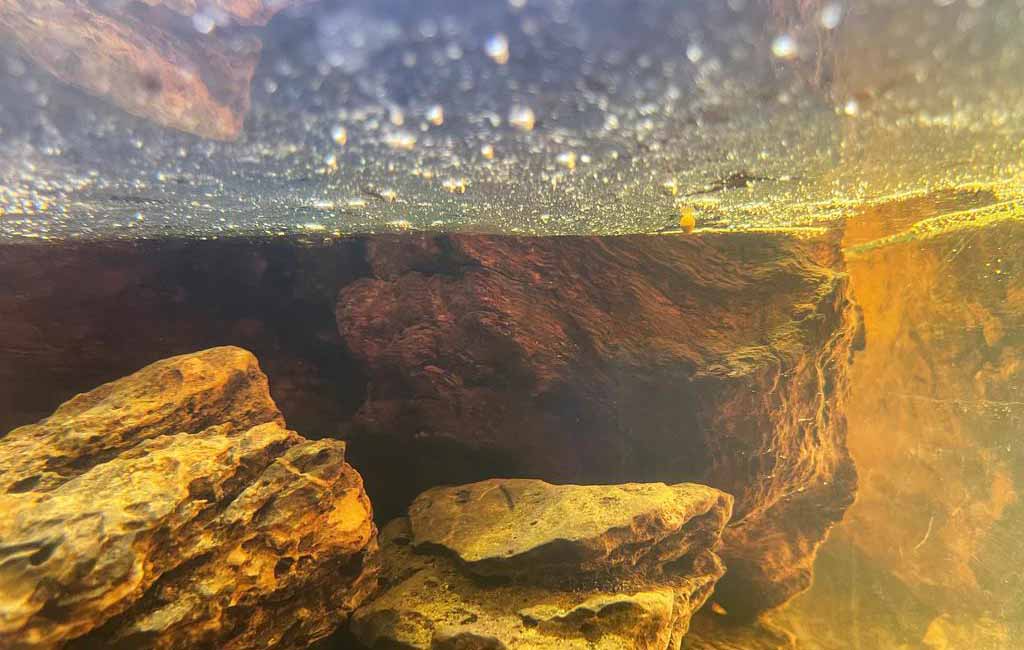
fish tank biofilm
Improve Filtration and Aeration
- Upgrade Your Filter: A good tank-sized and flow-rate filter will remove any excess nutrients and organic waste. A more efficient filter means water stays clean and less area for biofilm to grow.
- Surface Skimmer: By removing it from the surface, a surface skimmer will prevent the build-up of this biofilm at the surface of the water. In particular, tanks with low water movement benefit from these.
- Increase Aeration: Air stones or a bubble wall will help further increase oxygen levels and increase water flow which can help stop the stagnant bits of water that can become places where biofilm grows.
Introduce Biofilm-Eating Tank Mates
- Snails: Nerite or Mystery Snails are known for grazing biofilm and keeping surfaces clean.
- Shrimp: Amano shrimp or Cherry shrimp work wonders at cleaning away tank surfaces with algae and biofilm.
- Fish: Like Otocinclus catfish and other plecos, some species also help keep the surface of your tank clean of a bit of biofilm.
Conduct Regular Water Changes
- Weekly Water Changes: When you change 10–20% of water each week, you can reduce nutrient buildup, which also removes one of the organic materials that contribute to the biofilm building up.
- Dechlorinated Water: When changing the water, use dechlorinated water — use the tap, as your water will contain chlorine that could cause harm to the tank’s ecosystem.
Reduce Organic Waste
- Avoid Overfeeding: If you overfeed your fish, it will produce waste that doesn’t get eaten, which in turn will make the biofilm grow. Remember to only feed your fish what they can eat in 2–3 minutes.
- Vacuum the Substrate: To get rid of left-over fish waste and uneaten food from the substrate, use a gravel vacuum. This cuts back on the organic material by which biofilm thrives.
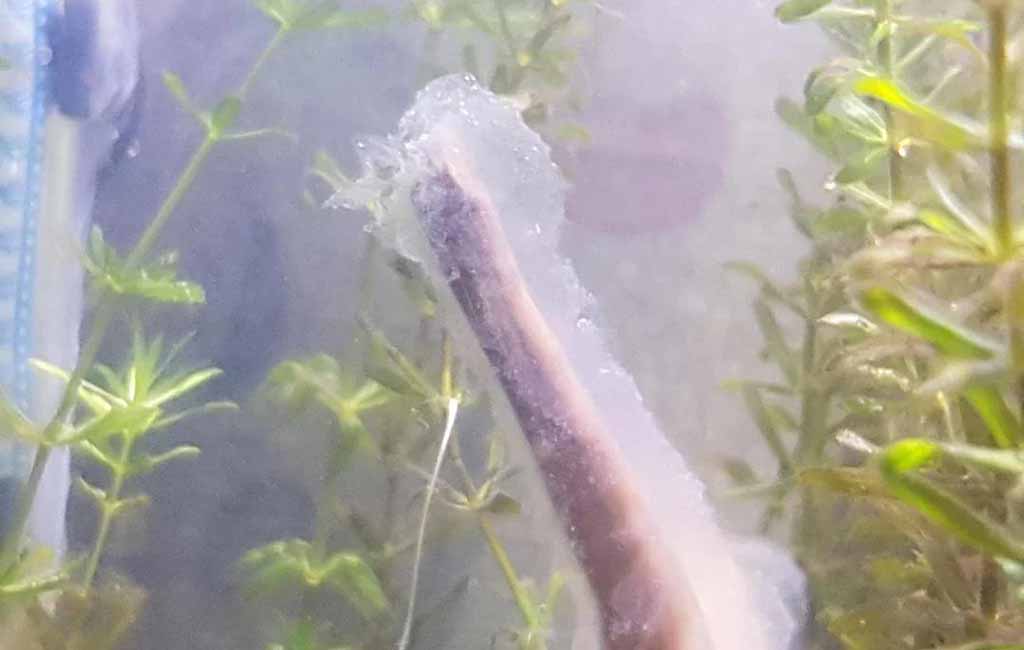
tank biofilm care
Use a UV Sterilizer
- How It Works: UV sterilizers are a machine that kills bacteria, algae, and other microorganisms in water via ultraviolet light. By doing this they decrease the bacterial load that contributes to biofilm formation.
- Long-Term Solution: Also very useful in larger tanks or those with frequent problems with biofilm. They are helping to keep water cleaner in the long term.
Use Chemical Treatments (If Necessary)
- Biofilm-Specific Treatments: Some products are intended to break down your biofilm. Treat anything safe for fish, plants, and beneficial bacteria.
- Follow Instructions: Anything that makes contact with your tank’s ecosystem should be used in the smallest amounts possible to avoid chemical imbalance.
Closing Remarks
A healthy fish tank is only possible if you try to maintain a healthy balance of biofilm. Biofilm has an extremely important role in aquarium ecology, breaking down organic matter, so it’s important to keep it in check. Extensive buildup can cause problems for fish health and system overgrowth. If these causes are known, regular maintenance is performed, and the proper techniques are used, then your underwater environment can stay clean and stable for your aquatic life.

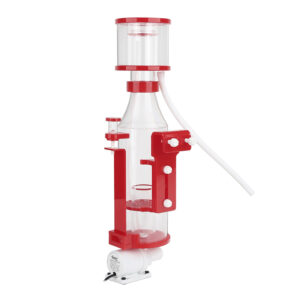
Leave a comment